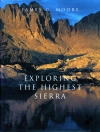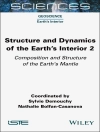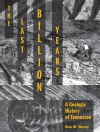Life on Earth has been evolving and interacting with the surface
and atmosphere for almost four billion years. Fossils provide a
powerful tool in the study of the Earth and its history. They also
provide important data for evolutionary studies and contribute to
our understanding of the extinction of organisms and the origins of
modern biodiversity.
* * Introduces the study of fossils in a simple and straightforward
manner.
* Short chapters introduce the main topics in the current study
of fossils.
* The most important fossil groups are discussed, from
microfossils through
* invertebrates to vertebrates and plants, followed by a brief
narrative of life on earth.
* Diagrams are central to the book and allow the reader to see
most of the important data ‘at a glance’.
* Each topic covers two pages and provides a self-contained suite
of information or a starting point for future study.
İçerik tablosu
Acknowledgements.
Dedication.
1. Introduction.
2. Fossils and evolution?.
3. Sponges.
4. Corals.
5. Bryozoans.
6. Brachiopods.
7. Echinoderms.
8. Trilobites.
9. Molluscs.
10. Graptolites.
11. Vertebrates.
12. Land Plants.
13. Microfossils.
14. Trace Fossils.
15. Precambrian Life.
16. Phanerozoic Life.
Index
Yazar hakkında
Clare Milsom is a Principal Lecturer in the School of
Biological and Earth Sciences at Liverpool John Moores University,
UK. She has a Ph D from Liverpool University and her main research
interests are in exceptionally preserved crinoids, functional
morphology, and evolution.
Sue Rigby is Director of Teaching in the School of
Geosciences, University of Edinburgh, UK. She has a Ph D from
Cambridge and concentrates her research on the evolution of
plankton and the functional morphology of graptolites.
Both authors enjoy teaching and have substantial experience in
presenting paleontology to earth science and biology students.












